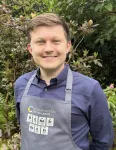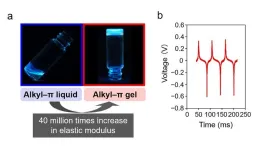(Press-News.org) Advances in organoids and embryonic models of human development have the potential to prompt social and existential questions—e.g., what defines human individuality? However, bioethicist Insoo Hyun of Harvard Medical School and the Museum of Science in Boston says that these models have the potential to strengthen rather than weaken the concept of human individuality when considered within the philosophical frameworks of “personhood” and sentience. In a commentary publishing June 20 in the journal Cell, Hyun argues that despite huge advances, we are a long way off from developing technologies that would enable embryo models or organoids to achieve personhood.
“In the process of illuminating these biological mysteries, human stem-cell-based modeling could recast much of what we take to be special about ourselves as simply a reproducible series of physical events,” writes Hyun. “Could these new technologies change our view of ourselves? What does it mean for individuality, for example, if the early embryonic history of each cell line donor can be replayed again and again through the artificial generation of identical human embryo models?”
To answer these questions, Hyun dives into the philosophical concepts of personhood and sentience.
To be a person rather than simply an individual, one must possess the ability to make rational decisions and act thoughtfully on desires. Hyun notes that it is the embryo’s potential to become a person, not its current personhood, that matters to most human embryo advocates, and similar issues surround patients at the end of life. However, this potential hinges not only on the embryo’s or end-of-life patient’s biology, but also on their technological and circumstantial situation.
“Ex corporeal embryos, for example, must not only be genetically and morphologically robust to have a biological chance at becoming a human person, but, just as crucially, they must also be chosen—normally by those for whom they were created—to be implanted into a woman’s uterus and carried to term,” writes Hyun. “Likewise for patients at the end of life. Not only must they have the biological potential for their brains to recover functioning, but they must also be cared for in a hospital setting by decision makers who have the right technologies at their disposal.”
For embryos used in research rather than for assisted reproductive purposes, the circumstantial potential for them to become a person is non-existent. Similarly, though organoids can self-assemble and carry out many of the functions of human organs on a small scale, there is no possibility that they could self-assemble into an independently functioning and conscious individual.
“Since the cognitive bar is set so high for personhood, it seems premature to worry about whether brain organoids, neurological chimeras, or embryo models deserve the ethical protections normally afforded to persons,” Hyun writes. “The science simply is not there to support these concerns now and would have to depend on major technical innovations to get there in the future. Not even the most extreme forms of human-to-nonhuman neurological chimerism that one could imagine would support fears about personhood emerging in acutely altered animals.”
Likewise, current in vitro embryo and organoid models are far from reaching sentience—the ability to have sensory experiences like pleasure and pain—which is thought to arise in human fetuses after 24 gestational weeks. The only case in which organoids are likely to experience sentience is when they are transplanted into a living animal model, for example the recent study by Stanford researchers that transplanted human brain organoids into rats—but rats are already considered sentient, and the ethics of such studies are already scrutinized as such.
“In response to the question of whether new technologies for human developmental modeling could destabilize our view of ourselves, the answer is no, not if we remain mindful of the bedrock distinctions between biological individuals and persons, biological and circumstantial potentiality, and sentient and non-sentient biological individuals,” writes Hyun. “Rather than weakening the grounds for which we value human life, perhaps an increased familiarity with developmental models could strengthen our beliefs by reminding us of what really matters–the wellbeing of actual persons and sentient individuals.”
###
Cell, Hyun et al. “Dynamic Models of Human Development and Concepts of the Individual” https://www.cell.com/cell/fulltext/S0092-8674(24)00537-3
Cell (@CellCellPress), the flagship journal of Cell Press, is a bimonthly journal that publishes findings of unusual significance in any area of experimental biology, including but not limited to cell biology, molecular biology, neuroscience, immunology, virology and microbiology, cancer, human genetics, systems biology, signaling, and disease mechanisms and therapeutics. Visit http://www.cell.com/cell. To receive Cell Press media alerts, contact press@cell.com.
END
Last year on a Friday evening, chemical biology researcher Josh Smalley was in the lab when he received a call inviting him to appear on the 14th and latest season of The Great British Bake Off. Starting as one of a group of 12 amateur bakers, Smalley made it all the way to the final round, where the top 3 contestants compete for the winning spot. In an essay published in the journal Cell Chemical Biology on June 20, Smalley describes the overlap between chemistry and baking and how his training in one ...
Scientists have discovered a new cause of why people who lack a specific blood group are genetically predisposed to be overweight or obese.
A team of international researchers, led by the University of Exeter, discovered that people with a genetic variant that disables the SMIM1 gene have higher body weight because they expend less energy when at rest.
SMIM1 was only identified 10 years ago, whilst searching for the gene encoding a specific blood group, known as Vel. One in 5,000 people lack both copies of the gene, making them Vel-negative. The findings from the new research suggest that this group is also more likely to be overweight, a conclusion ...
The discovery of a new, ancient, predatory reptile dubbed Parvosuchus aurelioi — part of a group of crocodile-like reptiles called pseudosuchians — in Brazil is described in a paper in Scientific Reports. The specimen, which dates to approximately 237 million years ago, during the Middle-Late Triassic, is the first small predatory reptile of its kind to be found in this country.
Prior to the dominance of the dinosaurs, pseudosuchians were a common form of ancient quadruped reptile during the Triassic Period (252 – 201 million years ago), with some species amongst ...
About The Study: The findings of this study suggest that increased maternal mental health symptoms during the COVID-19 pandemic are associated with subsequent changes in regional brain growth in newborn offspring.
Corresponding Author: To contact the corresponding author, Nickie Andescavage, M.D., email nniforat@childrensnational.org.
To access the embargoed study: Visit our For The Media website at this link https://media.jamanetwork.com/
(doi:10.1001/jamanetworkopen.2024.17924)
Editor’s Note: Please see the article for additional information, including ...
About The Study: In this case-control study of Chinese older adults, adhering to a healthy lifestyle appears to be important even at late ages, suggesting that constructing strategic plans to improve lifestyle behaviors among all older adults may play a key role in promoting healthy aging and longevity.
Corresponding Authors: To contact the corresponding authors, email Xiang Gao, M.D., Ph.D. (xiang_gao@fudan.edu.cn) and Xiaoming Shi, M.D., Ph.D. (shixm@chinacdc.cn).
To access the embargoed study: Visit our For The Media website at this link https://media.jamanetwork.com/
(doi:10.1001/jamanetworkopen.2024.17931)
Editor’s Note: Please see ...
A team of international researchers has revealed a new, simple clinical test to detect Calcium Release Deficiency Syndrome (CRDS), a life-threatening genetic arrhythmia that causes dangerously fast heartbeats and can lead to severe complications such as sudden cardiac arrest and death.
The new diagnostic method monitors for changes in electrocardiography (ECG) after a brief period of a fast heartbeat and a pause, which can occur naturally or be induced by artificially pacing the heart.
This research was co-led by Jason Roberts, a scientist at the Population ...
New Haven, Conn. — Patients with pancreatic cancer who received chemotherapy both before and after surgery experienced longer survival rates than would be expected from surgery followed by chemotherapy, according to a new study from researchers at Yale Cancer Center (YCC) and Yale School of Medicine.
The study, published June 20 in JAMA Oncology, included patients with pancreatic ductal adenocarcinoma (PDAC), which accounts for 90% of pancreatic cancers. An aggressive cancer with a high mortality rate, PDAC is predicted ...
A new study presents video evidence that at least one species of terrestrial leech can jump, behavior that scientists have debated for more than a century. Researchers from the American Museum of Natural History, Fordham University, and City University of New York (CUNY)’s Medgar Evers College published the footage and corresponding analysis today in the journal Biotropica.
“We believe this is the first convincing evidence that leeches can jump and do so with visible energy expenditure,” said lead author Mai Fahmy, a visiting scientist at the Museum and a postdoctoral researcher ...
1. A team of researchers from NIMS, Hokkaido University and Meiji Pharmaceutical University has developed a gel electret capable of stably retaining a large electrostatic charge. The team then combined this gel with highly flexible electrodes to create a sensor capable of perceiving low-frequency vibrations (e.g., vibrations generated by human motion) and converting them into output voltage signals. This device may potentially be used as a wearable healthcare sensor.
2. Interest in the development of soft, lightweight, power-generating materials has been growing in recent years for use in soft electronics designed for various purposes, such as ...
When E. coli detects damage to its genetic material, it sends out an SOS signal that alters activity inside the cells.
“The bacteria go into full emergency mode,” says PhD candidate Olaug Elisabeth Torheim Bergum at the Norwegian University of Science and Technology (NTNU).
Imagine that you have a very sore throat. You're sick, your throat hurts, and a visit to the doctor confirms that the pain is due to a bacterial infection. You get a prescription for antibiotics, which quickly sorts out your sore throat. You are pleased that the treatment ...



